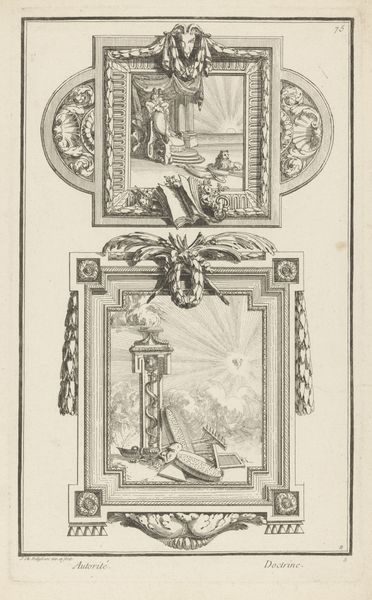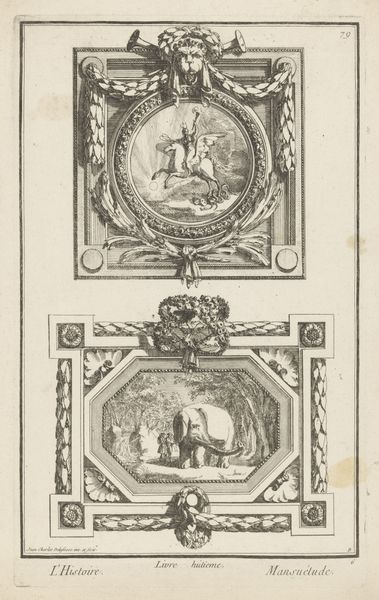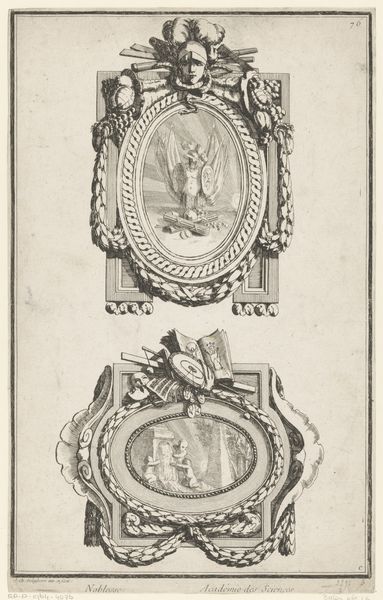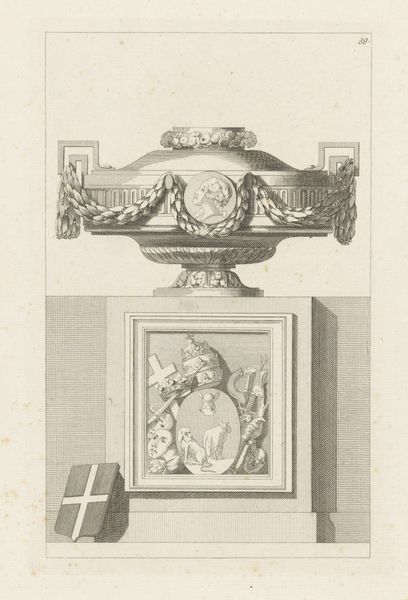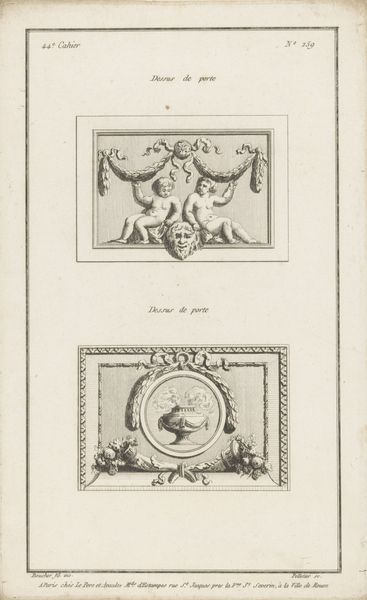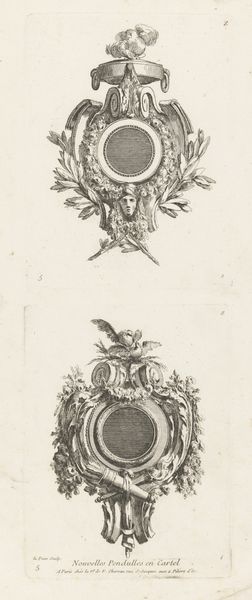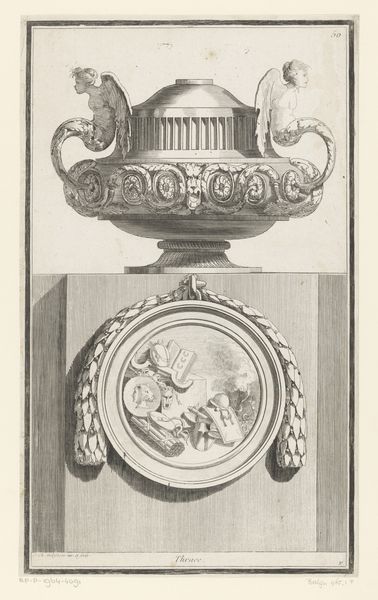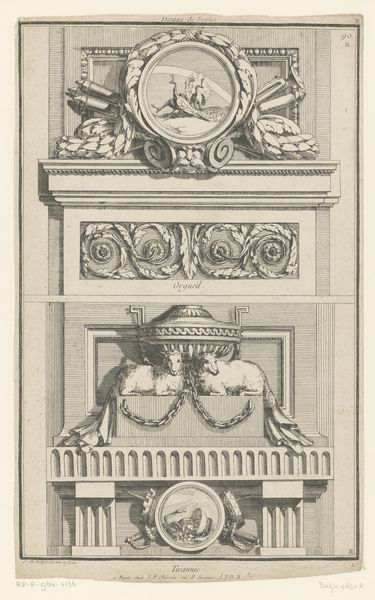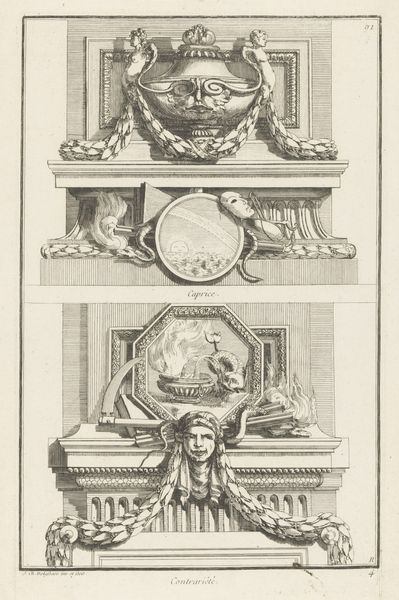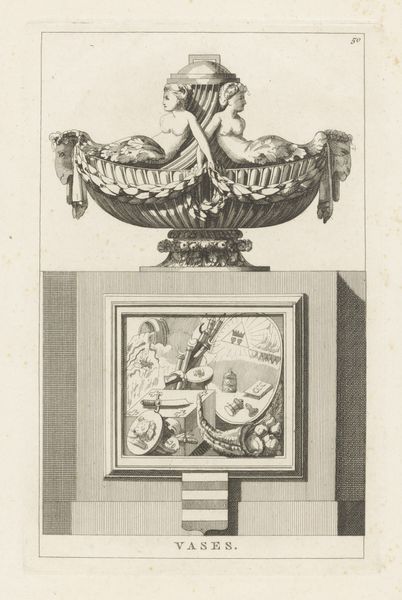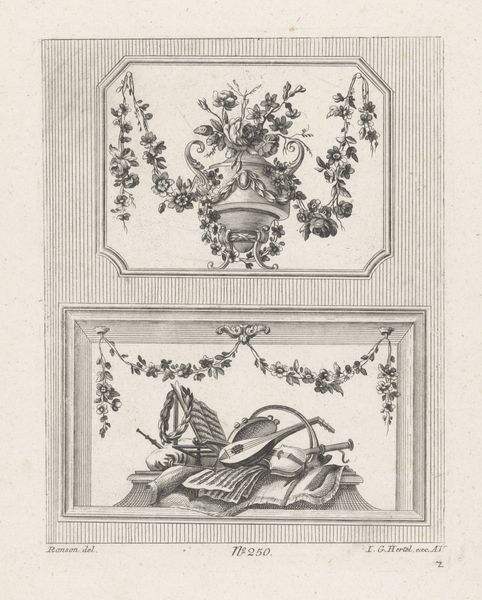
graphic-art, print, engraving
#
graphic-art
#
neoclacissism
#
allegory
# print
#
old engraving style
#
form
#
line
#
history-painting
#
academic-art
#
engraving
Dimensions: height 381 mm, width 236 mm
Copyright: Rijks Museum: Open Domain
Curator: Welcome. Here we have Jean Charles Delafosse’s print, “Ambitie en Onenigheid,” which translates to “Ambition and Discord,” created between 1768 and 1771. It’s currently held at the Rijksmuseum. It looks like an engraving. My first impression is somber, although meticulously rendered, with dense allegorical detailing. Editor: Indeed. The craftsmanship here is significant. The precision of the lines, the detail in the laurel wreaths and architectural structures, tell us so much about Delafosse’s skills as a draftsman, his access to tools, and his sustained labor. What were prints like this used for in 18th century Europe? Curator: Prints like this often functioned within the social economy as both decorative and didactic objects. Ambition, shown on top with the lion looking towards sun, the book, and laurel wreath, is rendered as a virtue—but the lower half of this print demonstrates discord, signified by broken objects. We are seeing Delafosse reflecting the values of the elite class he aimed to serve, specifically demonstrating morality through allegorical form. Editor: So these contrasting ideals speak directly to class aspirations, as a kind of instructional manual of virtues and vices through accessible visual language, even beyond literacy. I see the broken horn or trumpet... a suggestion of political failure? What social hierarchies is Delafosse legitimizing through this kind of representational choice? Curator: Perhaps. We see Neoclassical aesthetics deployed to frame morality, something that serves particular social needs during a time of rising revolutionary fervor and upheaval in both America and France. This is meant for more than decoration; Delafosse wants to project very particular moral messages during moments of societal tension. Editor: You are right: there's a reinforcement of order amidst instability here. For Delafosse, I am struck that a print of this nature demonstrates his own ambition – to solidify his place within academic art and gain patronage through such demonstrable skill, contributing to these structures of authority rather than questioning them. Curator: Exactly. I see how a materialist lens makes his choice very legible. These allegorical visuals speak volumes about Delafosse and the socio-political position he wants to champion. It’s not a neutral representation. Editor: It gives one so much to reflect upon, indeed! This dance between virtue and vice seems an apt historical commentary and a timeless reflection.
Comments
No comments
Be the first to comment and join the conversation on the ultimate creative platform.
